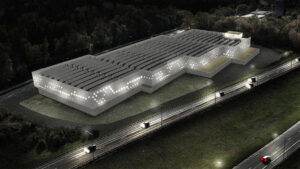Article published on CO.EXIST
 In a genius solution to the problem of overheated servers in data centers, Stockholm wants to take that excess heat and funnel it directly into local homes.
In a genius solution to the problem of overheated servers in data centers, Stockholm wants to take that excess heat and funnel it directly into local homes.
If you live in Stockholm, your apartment could be heated by other people browsing the internet.
The city, working with several partners, wants to help multiple large data centers come to Stockholm—and then harvest the heat from those data centers into a local district heating system. A single 10-megawatt data center can produce enough heat for 20,000 apartments.
Excess heat from servers is normally a liability for data centers. Since keeping servers cool takes a lot of electricity, it’s both expensive for companies and part of a large carbon footprint. By one estimate, data centers now use as much energy as the airline industry. Over the next decade, that electricity use may triple.
In the new Stockholm Data Parks initiative, data centers will run on low-cost renewable energy. Excess heat can be sold to the local district heating company, Fortum Värme, or exchanged for free cooling as a service.
The city has had district heating—a system that delivers heat via hot water to multiple buildings, rather than heating one building at a time—for decades. But in the past, the source of the heat was sometimes fossil fuels. Fortum Värme is increasingly trying to use waste heat or biomass instead.
“The reason data center heat is a valuable resource is that the heat has to be produced with some fuel,” says Erik Rylander, head of heat recovery solutions at Fortum Värme. “Since we need the heat for many months of the year—all months, actually, because we also use the same system for heating warm tap water—the value of the data center excess heat will be measured in relation to the alternative heat production cost.”
Having a full district heating system in place makes it possible to reuse heat from data centers at a large scale. Since a 10-megawatt data center produces enough energy to heat 20,000 apartments, only a large system could absorb that much.
“As a data center, you don’t want to be dependent on a single or a few buildings, as it will increase the risk that they would not be able to take on the heat,” Rylander says. “So the size of the network also reduces your risk, as the aggregate demand for heat will be stable.”
Because of this, a data center in Stockholm—unlike a data center that runs on renewable energy elsewhere without a district heating system—could actually become carbon positive. A 10-megawatt data center could reduce emissions by 8,000 metric tons.
The district heating system already works with some small data centers, but hopes to scale up through the new initiative. To lure companies to establish data centers in the city, the partners are providing several large sites with power, cooling, heat recovery, and dark fiber infrastructure ready to go. A tax credit helps make electricity cheap.
Ultimately, the city hopes to source 10% of its heat from data centers as part of its strategy to become fossil fuel-free by 2040.